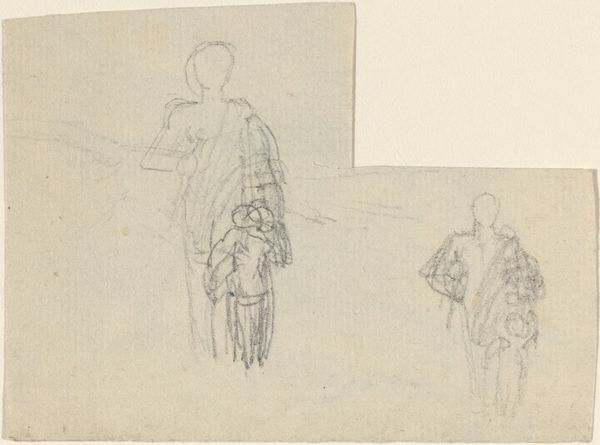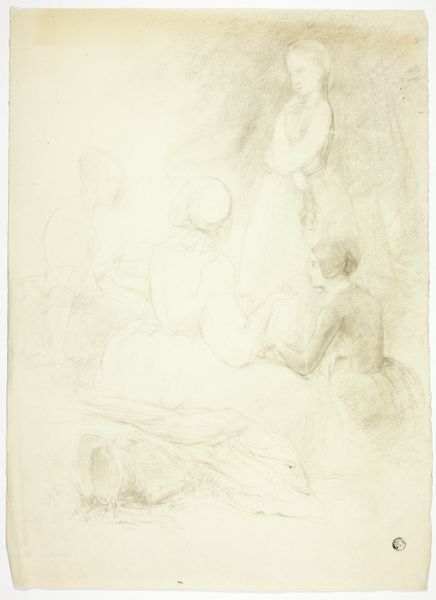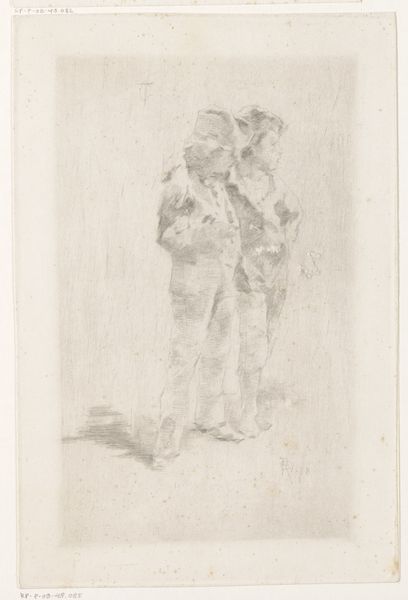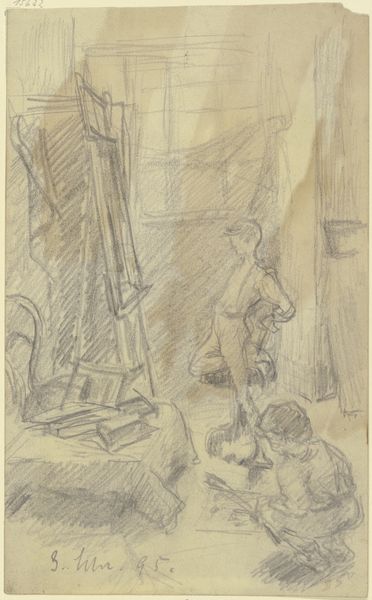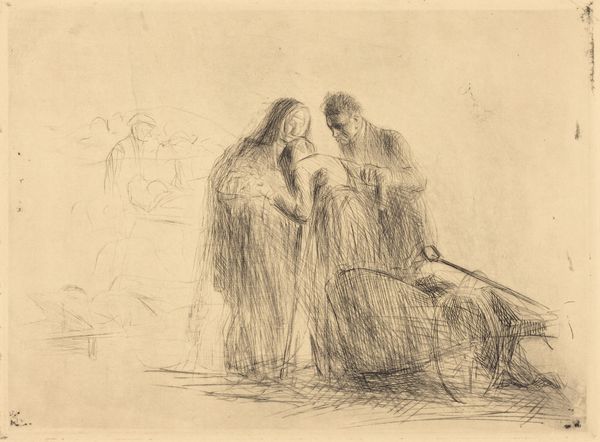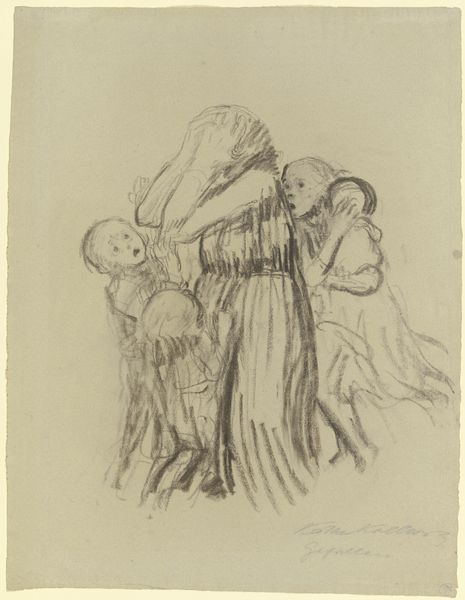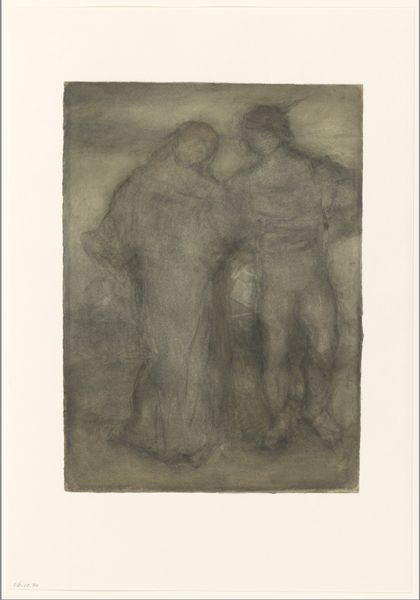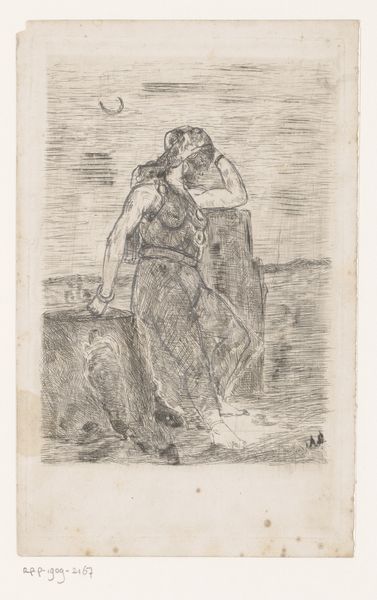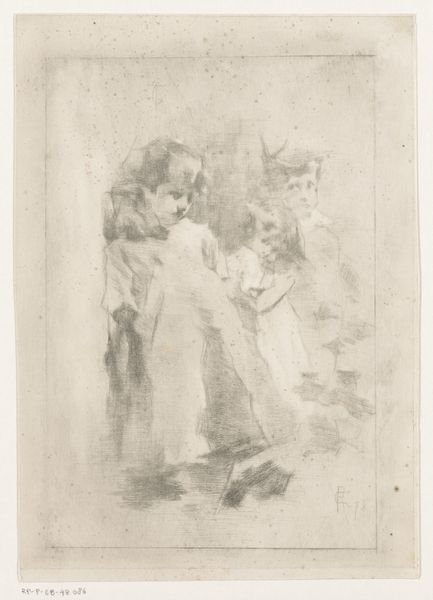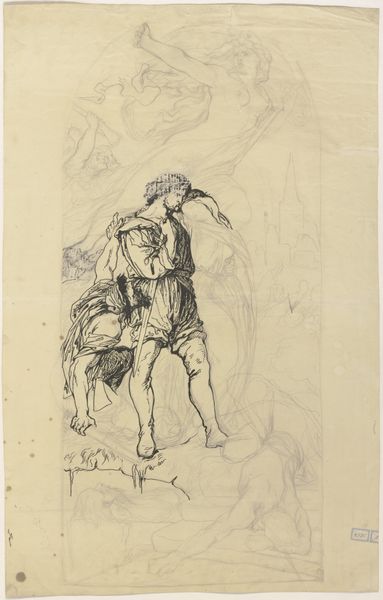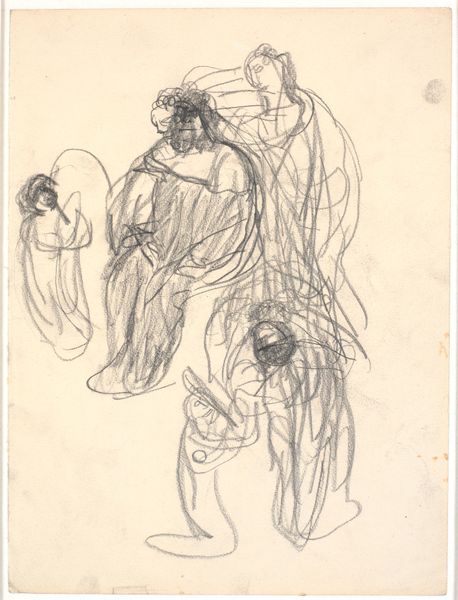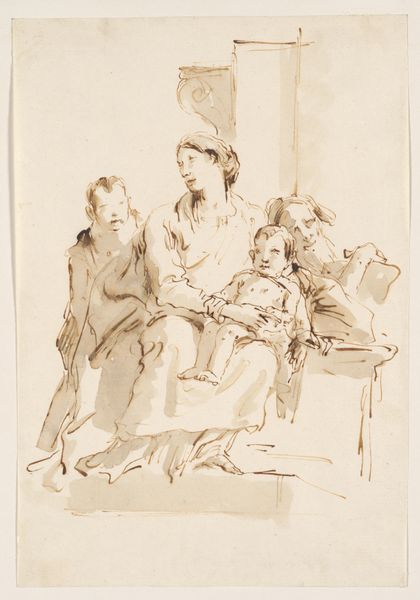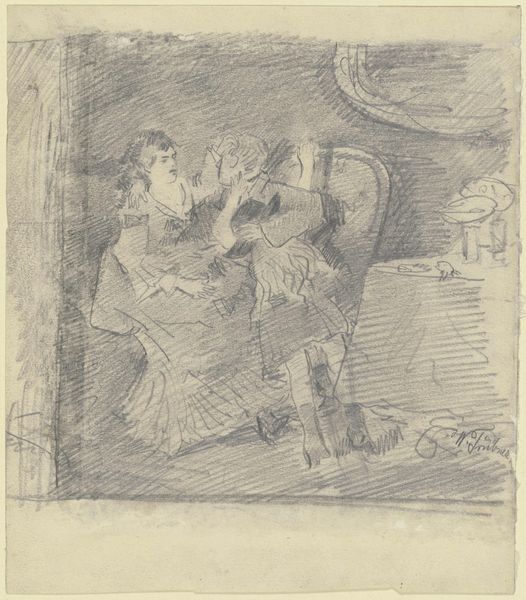
Dimensions: height 352 mm, width 251 mm
Copyright: Rijks Museum: Open Domain
Editor: This is "Drie pootjebadende kinderen," or Three Children Paddling, a pencil drawing made sometime between 1874 and 1927 by Johan Antonie de Jonge. It feels quite ephemeral, almost like a memory fading at the edges. What catches your eye, looking at it? Curator: The grouping of figures, the children together in this liminal space between water and land…it feels timeless, doesn’t it? I see echoes of ancient bathing rituals, votive offerings to river gods, the symbolic cleansing and renewal inherent in immersion. Editor: That’s interesting, I was mainly focused on the Impressionistic style and technique. But I see what you mean, there is something primal about it. Curator: Notice how the artist uses line – the repetition in their striped shirts, echoing the ripples in the water. What could that signify? Perhaps social belonging but also the mirroring between the human world and the natural one? Editor: It almost blends the figures into the water. Are you suggesting that childhood is inherently linked to nature? Curator: Perhaps, but also think about how water is used symbolically. In many cultures, it signifies purification, transition, even danger. Look at their downward gazes; are they contemplating their reflection or the future? What stories do you imagine? Editor: I still see carefree play, but you've given me a lot to think about, especially that sense of the symbolic weight of the water itself. I definitely see it in a new light now. Curator: And I appreciate your perspective as well – reminding us that even in the deepest symbols, there is a playfulness to be found, just beneath the surface.
Comments
No comments
Be the first to comment and join the conversation on the ultimate creative platform.
